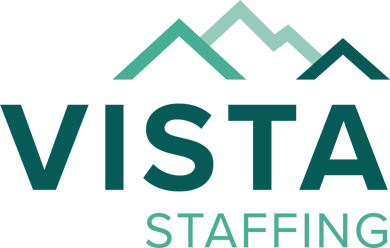Resources for Semi-Retirees
VISTA has compiled advice from our team of experienced licensers and credentials verification experts, risk management/quality assurance professionals, and physicians to help you make a successful transition into locum tenens work international placement or a new permanent position.
- Staying Active
-
Stay Clinically Active
It’s essential that you plan ahead for your career transition and consider your options before giving up your practice. If you wait too long following your actual retirement, re-entering the workforce may require a hands-on clinical refresher course or a preceptorship. In most specialties, you will have difficulty jumping back into practice if you have been away from clinical work for more than a year. However, this timeframe is shorter in some specialties. Talk with a VISTA recruiter about using an upcoming vacation to “test drive” another work option to see if it fits your future plans.
You will also need to stay current on your CME so you can renew state licenses and/or qualify for new ones. Requirements vary by specialty and by state. Visit the Federation of State Medical Boards website, select For the Public on the top left-hand side of the homepage, then select Directory of State Medical Boards in the bottom right-hand corner. This will take you to links to the websites of every state medical board. Make sure to maintain detailed documentation on all of your CME.
- Board Certification
-
Maintain Your Board Certification
At VISTA, we find that more and more hospitals and practices will not consider non-board certified physicians for locum tenens or permanent positions. This means it is increasingly difficult for us to find assignments for non-board certified physicians. In addition, some state licensing boards are reluctant to issue licenses to non-board certified physicians. Our international clients also require board-certified doctors, so if an overseas adventure is in your plans, make sure you recertify according to the requirements of your specialty. All certificates issued by members of the ABMS (American Board of Medical Specialties) are time-limited. The limits range from six to 10 years, depending on the board and specialty.
- Licenses
-
Keep Licenses Active
Keep your state licenses, your DEA, and your relevant certificates active. Some states require that you pay all back fees when you reactivate a license. And other states view any lapsed license as a red flag and require an explanation during the licensing process. This will slow down the processing of any applications you submit in the future. If you choose to work with VISTA, we will help you stay on top of renewals and applications for new licenses. We stay abreast of state-specific requirements for CME, for example, and can help you work training into your schedule.
If you do decide to officially retire or let a specific state license go, make sure to contact the licensing board and formally cancel the license to avoid any problems.
- Documents
-
Keep These Documents Handy
Physicians who work locum tenens and extended assignments undergo an initial credentials verification process with VISTA Staffing Solutions. We assist you in obtaining licenses in additional states or countries based on your interests and the assignments you accept. And we coordinate credentialing and help you get privileges at each assignment location. Our 20-member credentials verification team recommends that you keep the following documents together securely so they can access them to start these processes from any location.
- Birth certificate (if born in the U.S.), naturalization papers, or proof of U.S. employment eligibility
- Six (6) legal passport photos for licensing and staff privilege applications
- Copy of undergraduate diploma
- Copy of medical school diploma
- Copy of National Boards certificate or other initial licensing exam scores
- Copy of all post-graduate training certificates:
- Internship
- Residency
- Fellowship (if applicable)
- Copy of specialty board certification(s) and recertification(s) (if applicable)
- Copy of current DEA registration
- Copy of all state licenses, both active and inactive (your wall certificates and wallet cards)
- Copy of state-controlled substance registrations (if applicable)
- Copy of ECFMG certificate (if applicable)
- Copy of ACLS/ATLS/BLS/NALS/PALS/NRP/MSQA certificates (as applicable)
- Copy of military separation papers (i.e., DD214) (if applicable)
- A Powerful CV
-
Build A Powerful CV
Build a powerful CV
A few simple tips will make a difference in the impact your Curriculum Vitae (CV) can have on a potential employer, locum tenens agency, or locum tenens client.
Be thorough
- As a general rule, list your most current activity first. Include month/day/year for all dates.
- Any gap in time must be explained. If you took a sabbatical, for example, spell it out in your CV. Otherwise, it will generate a red flag in the mind of the reviewer.
- Keep your CV short and compact, not to exceed two pages if possible.
- Include your full name and make sure you can be reached at the address, telephone number, and email address that you include. Check this each time you send your CV out.
- If you are an International Medical Graduate (IMG) or a Foreign Medical Graduate (FMG), make sure you mention your visa status.
- Finally, there are a few items best left out of your CV. These include social security numbers, licensure numbers, and examination scores. You will have the opportunity to supply them at a later date in a more secure way. Do not include race or religion. Marital status and number of children are optional.
Use title headings and a consistent flow
Break the information into sections with clear title headings. For example, if you have published medical papers, title them as “publications.” If you have medical research that has been submitted or is in progress, use the title “research experience.”
People who review lots of CVs—including organizations that are regular users of locum tenens physicians—are used to seeing the information in the following order. We recommend that you follow it.
Click here to download a pre-formatted Microsoft® Word template that will help you get started.
- Personal information (Full name, address, phone numbers, email address)
- Professional work
- Practice specifics
- Hospital affiliations
- Military service
- Academic history
- Graduate training
-
- Fellowship
- Residency
- Internship
- Medical school
- Undergraduate training
-
- Licensure
- Certifications
- Recertification dates
- Professional associations
- Honors
- Volunteer work, community service, additional accomplishments
- Publications, presentations, research
Use an all-purpose font
Use an all-purpose font that is easy to read and holds up when faxed. Arial and Times New Roman are good choices. Non-standard fonts may not be loaded on all computers, so a person who has received an electronic copy of your CV may not be able to read it. At the very least, the computer will substitute another font and mess up your formatting. Avoid the use of all capital letters and excessive bold, italic, or underlining. Use a minimum size of 12-point type.
Update and customize for each opportunity
It is usually very easy to update your CV and add a few details that make it evident that you are interested in a specific job. This is critical if you are applying for a permanent position. However, if you choose to work as a locum tenens with VISTA, we can help you create a CV specific to locum tenens that won’t require constant changes. We’ll also help you keep it up to date as you gain experience, new licenses, and new certifications.
- Stay Connected
-
Stay connected (electronically) to family and friends
Once you choose a new career path, be it locum tenens, an international position, or a new permanent job, it’s easier than ever to stay connected to family, friends, and colleagues.
Blogging: easy, free, fun
Weblogs, or “blogs,” are personal journals you write and post on the Web. Many sites give you the tools and bandwidth to create and maintain a personal blog free of charge. Because everything is stored on the Web, not on your computer, you can post entries to your blog from any computer with internet access. You can make your blog public if you like, so anyone can read it, or make it private so only people you invite can keep up on your travels and musings. You can use your real name, so people can find your blog by searching for you on the Web or use a pseudonym to protect your privacy and limit readers to those you invite.
Photo storage and sharing
There are just as many easy-to-use, free services available online to store, edit, and share photos and videos of your adventures.
We’ve compiled a shortlist of electronic resources for blogs and photos. Each one offers a slight twist. So pick the ones you find most accessible to use and give them a try. There is no risk. Plus, it’s a great creative outlet as you enter a new phase in your career and life.
- Blogger: Google’s very simple free blogging tool for Gmail users lets you post accounts of your travels, photos, video, and more. www.blogger.com
- Travel Pod: Another free blogging option with some excellent features related to travel—quickly uploaded from Internet cafes to include maps, travel forums, and email updates. www.travelpod.com
- WordPress: Free blogging, plus easy add-ons like Flickr and Twitter. wordpress.com
- Photo Bucket: A free place to store, edit, and show off your photos: photobucket.com
- Flickr: Another free place to store, edit, organize, show off your photos, and make maps that show where it was taken: www.flickr.com
- Picasa: Ties into Gmail and Blogger and lets you create Web photo albums and slide shows: picasa.google.com.
- Create Blog: If you want to get fancy, go to www.createblog.com and find a design you can apply to your blog on Facebook, Instagram, Blogger, and other sites.
- YouTube: And of course, there’s YouTube, a video sharing website where you can upload, view, and share video clips: www.youtube.com
Contribute to the VISTA Physician Blog
Here’s an even easier way to stay connected and become part of the VISTA Voice “community.” Contribute a story, memory, photo essay, word of advice, or opinion to the VISTA Voice.
Reach out to your VISTA representative and ask them to submit it for publication on the blog.

